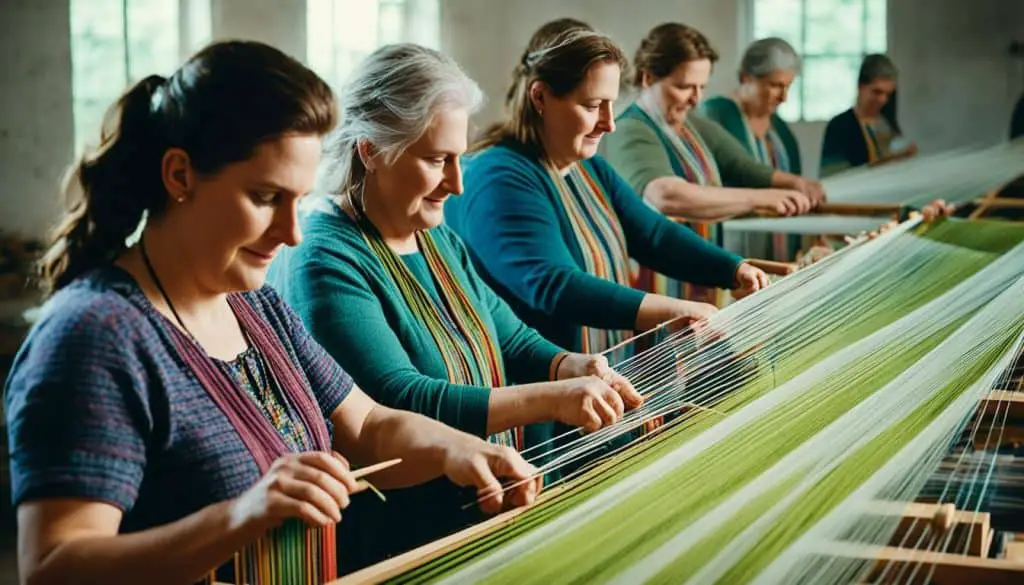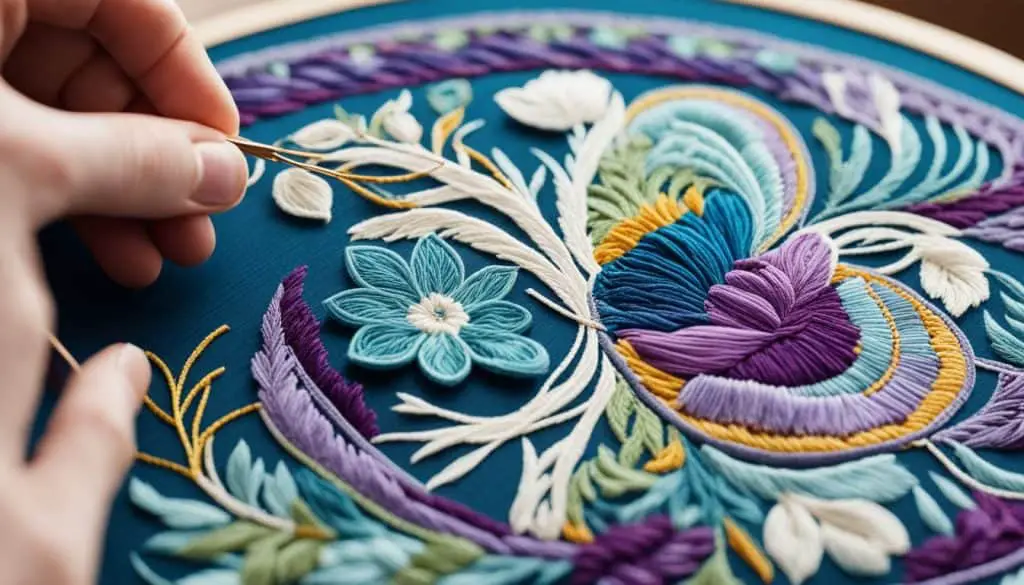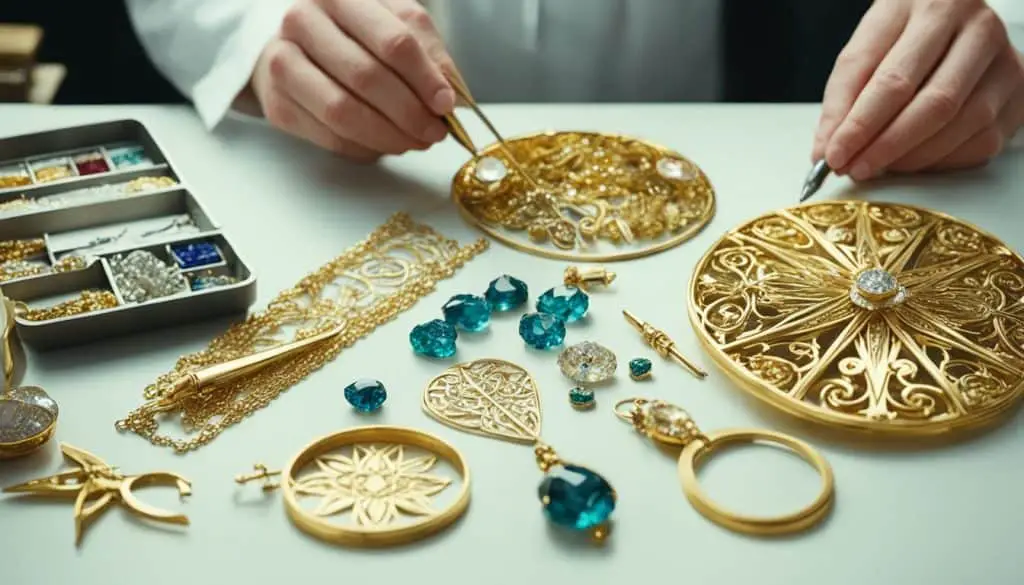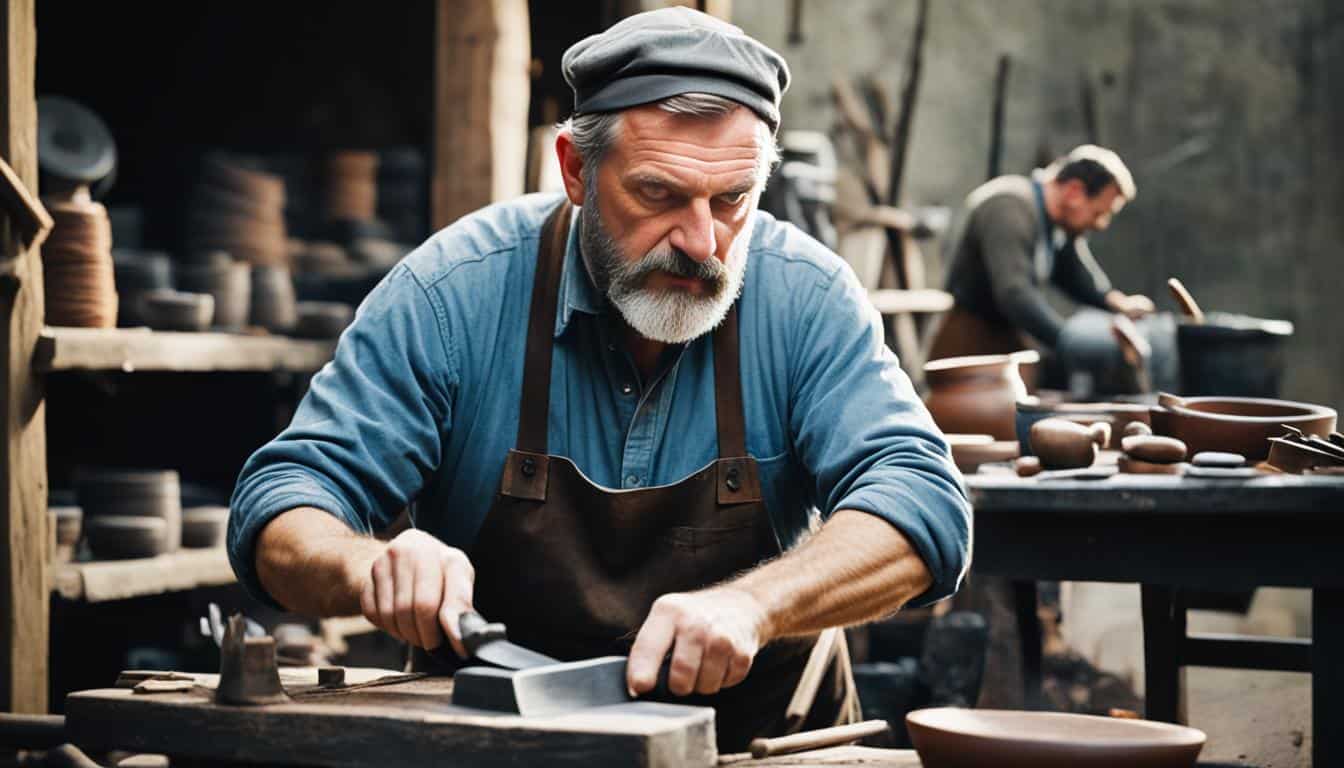Table of Contents
Have you ever wondered about the skilled artisans in biblical times? They shaped history with their incredible artistry. From making weapons to designing fine garments, these craftsmen were key in the biblical story. We’ll look at the world of types of craftsmen in the Bible. We’ll see how their skills added function, beauty, and meaning to their work.
We’re going to dig into the stories and skills of the biblical craftsmen. Get ready to be amazed by what they created. And see the big roles they had in the ancient world.
Smiths – Forging Weapons and Metal Objects
In the Bible, the earliest craftsmen we learn about are the smiths. They were skilled in making weapons and important metal items. These items were crucial for people’s lives in the past.
Tubal-Cain was a well-known smith mentioned in the Bible. He made many tools and weapons from bronze and iron. This shows how important smiths were for survival long ago.
Smiths were very skilled at their jobs. They used heat, hammers, and metal shaping to make things with precision. This helped build societies by providing tools for many uses.
Their work wasn’t just about function. They also showed their creativity in decorating items. They created beautiful designs on weapons and added decor that showed cultural or religious meanings.
The work of biblical smiths was key to their communities. It helped in many ways and also inspired other crafts that followed.
“The Lord said: ‘Go and get a potter’s earthenware jug. Take along some of the elders of the people and some of the elders of the priests, and go out to the Valley of the Son of Hinnom at the entry of the Potsherd Gate, and there proclaim the words that I tell you.'”
Smiths didn’t just make weapons and tools. They also helped with pottery making. They worked with potters to create all kinds of pottery needed for daily life.
Smiths and Spiritual Significance
Smiths also had a spiritual role in biblical times. The act of shaping metals symbolized change and purification. This made their work more than just a job.
Like metal is shaped by heat and hammering, people face challenges to grow stronger. This was often shown in the Bible to explain personal growth in faith.
In the end, the biblical smiths showed how craftsmanship impacts society. Their work with metal and spiritual lessons still inspire us today.
Carpenters – Building Essential Structures
In biblical times, carpenters were respected for what they could create. One famous carpenter was Bezalel. He had many talents in carpentry and other crafts. Bezalel’s skills helped build houses, furniture, and the Ark of the Covenant.
Bezalel was chosen by God, as written in Exodus 31:4. God filled him with the Spirit, wisdom, understanding, and knowledge. This made Bezalel able to craft detailed and functional furniture and structures. His work enhanced the beauty and use of biblical buildings.

“By the grace of God, I learned how to work with wood, stone, and metals to bring forth structures that served both practical and sacred purposes.” – Bezalel
Carpenters such as Bezalel deeply cared about their work. They made sure everything they made was top-quality. They paid close attention to detail and used their creativity to turn basic materials into both art and stuff people could use.
They didn’t just build homes and furniture. Carpenters also helped make important biblical places. For example, they built the Tabernacle. This was a sacred place where people could worship and connect with the divine.
The Significance of Carpenters in Biblical Times
Carpenters were crucial in biblical times for shaping the world people lived in. They made houses, meeting places, and worship places beautiful and functional. These places were key for daily life and spiritual activities.
Their work showed the creativity and talent given to them by God. Just like Bezalel crafted the Ark of the Covenant, carpenters across history have made lasting impacts. Their work built important structures that helped communities.
| Significant Structures Built by Carpenters | Function |
|---|---|
| The Tabernacle | Served as a portable sanctuary for worship and symbolized the presence of God among the Israelites. |
| Furniture | Including the Ark of the Covenant, wooden altars, and various items used in rituals and ceremonies. |
| Houses | Provided shelter and a sense of security for individuals and families. |
Carpenters helped make dreams a reality for architects, kings, and religious leaders. They left a big impression on biblical history and culture. Their commitment to quality and the details in their work continue to motivate builders and artists today.
Stonecutters/Masons – Crafting the Temple
King Solomon got skilled stonecutters and masons to build the Temple in Jerusalem. These experts cut and shaped stones needed for the Temple’s base.
King Solomon led over 30,000 stonecutters and masons. They worked carefully to make sure each stone fit perfectly. This skill was key to the Temple’s beautiful look.
The stonecutters and masons found and cut stones from nearby areas. They made sure the stones were strong and high-quality. This was crucial for building a long-lasting Temple.
“And now I will send a skilled man, endowed with understanding, Huram-abi, the son of a woman of the daughters of Dan, and his father was a man of Tyre. He is trained to work in gold, silver, bronze, iron, stone, and wood, and in purple, blue, and crimson fabrics and fine linen, and to do all sorts of engraving and execute any design that may be assigned him, with your craftsmen, the craftsmen of my lord, David your father.” – 2 Chronicles 2:13-14
These craftsmen knew more than just stonework. They could work with wood, metal, and make engravings. Their varied skills added to the Temple’s beauty and complexity.
Comparison of Stonecutting Techniques
| Technique | Description |
|---|---|
| Quarrying | Extracting large stone blocks from quarries using traditional tools and techniques. |
| Shaping | Precision cutting, carving, and polishing of stones to achieve the desired size and shape. |
| Joinery | Creating intricate interlocking joints to securely fit stones together. |
| Finishing | Smoothing and adding decorative details to the surface of the stones. |
The stonecutters and masons put their heart into the Temple in Jerusalem. Their work showed their dedication and skill for ages. The Temple was a beautiful reminder of their talent.
Weavers – Creating Intricate Garments
In ancient times, skilled weavers were crucial. They made beautiful clothes for priests. These weavers were respected for their ability to weave detailed patterns with colorful threads.
In Exodus 28:32, God told the Israelites to make the ephod. It was a special garment featuring pomegranates and bells. These symbols represented new life and closeness to God.
The weavers’ work was both creative and important spiritually. They crafted more than just clothes. Their designs showed the bond between God and the people He chose.
“You shall make on its hem pomegranates of blue, purple, and scarlet, all around its hem, and bells of gold between them all around: a golden bell and a pomegranate, a golden bell and a pomegranate, on the hem of the robe all around. And it shall be upon Aaron when he ministers, and its sound will be heard when he goes into the holy place before the Lord and comes out, so that he does not die.” (Exodus 28:33-35)
The weavers showed great skill and care. They honored their craft by turning threads into holy clothes. These garments added beauty to religious events.
Let’s look deeper at some of the amazing designs these weavers made.
1. Brocade
Brocade is known for its raised patterns. Weavers used thicker or metal threads to create these designs. They often included religious symbols or nature scenes.
2. Intarsia
Intarsia is like making a fabric mosaic. Weavers chose colors carefully to create detailed pictures. this the tapestries were often used to adorn walls or as decorative hangings.
3. Tapestry
Tapestry weaving involves dense, colorful threads. This creates detailed images or designs. It needs a lot of skill and care to blend the colors perfectly.
4. Geometric Patterns
Biblical weavers loved using geometric designs. They showed balance, harmony, and order in their work.
The weavers didn’t just make clothes. They added to the era’s religious and cultural identity. Their stunning designs and symbolism still captivate us today.

Embroiderers – Adding Decorative Patterns
Embroiderers were skilled craftsmen who worked with weavers, creating beautiful textiles. They were key in making the priestly clothes detailed and stunning as written in the Bible (Exodus 28:39).
They used techniques like needlework and cross-stitching to turn simple clothes into art. By adding patterns and figures onto fabric, they made the clothes more beautiful and full of meaning.
Their work included designs like geometric shapes, flowers, and detailed edges. They used many colors to bring life to the garments, making them truly special.
The patterns on these clothes were not just for looks. They were symbols of faith, showing the wearers’ deep connection to their beliefs and traditions.

Just think about the effort embroiderers put in, like doing each stitch with great care. They made sure that the colors and the design worked together perfectly.
Today, their skill is seen in embroidery around the globe. It’s in the rich decorations of the Catholic Church and the clothes of many peoples. Their work still inspires artists today.
Now, let’s move on to goldsmiths in ancient times. They made jewelry that was not only beautiful but also important for religious ceremonies.
Goldsmiths – Crafting Ornaments and Jewelry
Biblical goldsmiths were people of incredible skill in making jewelry. Bezaleel was one of the best, known for his wide range of talents.
They worked with precious metals, creating beautiful jewelry and ornate pieces. These items were worn by the wealthy and powerful, making the ancient world shine.
Goldsmiths created everything from rings and necklaces to golden idols. Their work showed off wealth and status. They turned ordinary metals into stunning art, impressing everyone who saw it.
“Bezaleel has filled him with the Spirit of God, in wisdom, in understanding, and in knowledge, and in all manner of workmanship, to devise cunning works, to work in gold, and in silver, and in brass, and in cutting of stones for setting, and in carving of wood, to work in all manner of workmanship.” – Exodus 35:31
Goldsmiths followed their love for beauty and quality. Their works symbolized power, wealth, and faith. They left an enduring mark on their era.
They made detailed jewelry for kings or ornaments for religious ceremonies. Goldsmiths were highly respected in ancient times. Their precise work and love for what they did meant their creations lasted for many years.
Now, let’s learn about another important group of craftsmen from the Bible – the potters. They embody God’s control through their art.

Potters – Symbolizing Divine Control
In Jeremiah 18:1-6, God is compared to a potter. This metaphor shows His complete control over us. Like clay on a potter’s wheel, He shapes our lives according to His plan. This shows how important potters and their work were in biblical times. They symbolized God’s powerful rule over us.
The potter’s wheel is central in Jeremiah’s vision. Watching a potter at work, Jeremiah understands God’s ability to change nations and people. This teaches us about our reliance on God. He has the power to lead us.
Potters were very important in the Bible. They made everyday items like jars and bowls. They also made beautiful and significant things. Their skill shows how valuable this art was.
The story of the potter’s wheel in Jeremiah 18:1-6 speaks volumes. It shows God’s loving control over us. This metaphor also honors the work of potters back then. God shapes our lives just like potters craft clay into useful and beautiful things. This passage is a strong statement about our connection to God and the value of human creativity.




